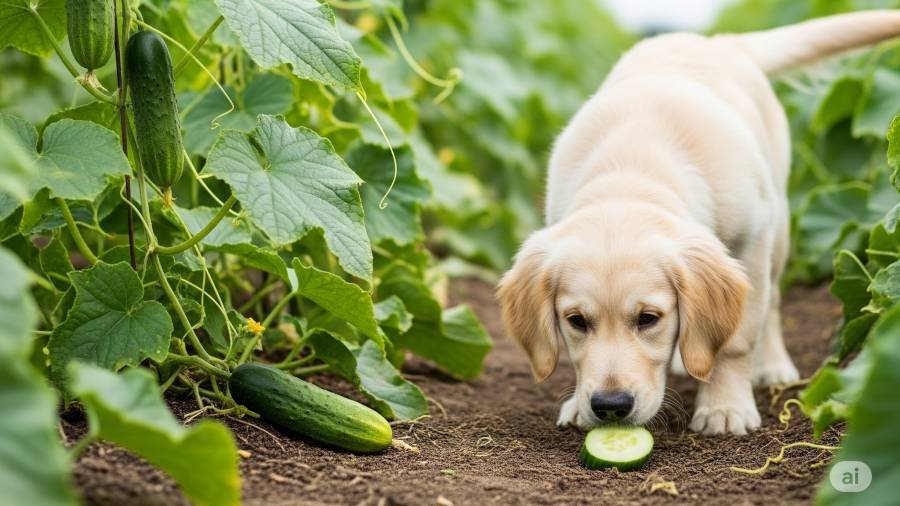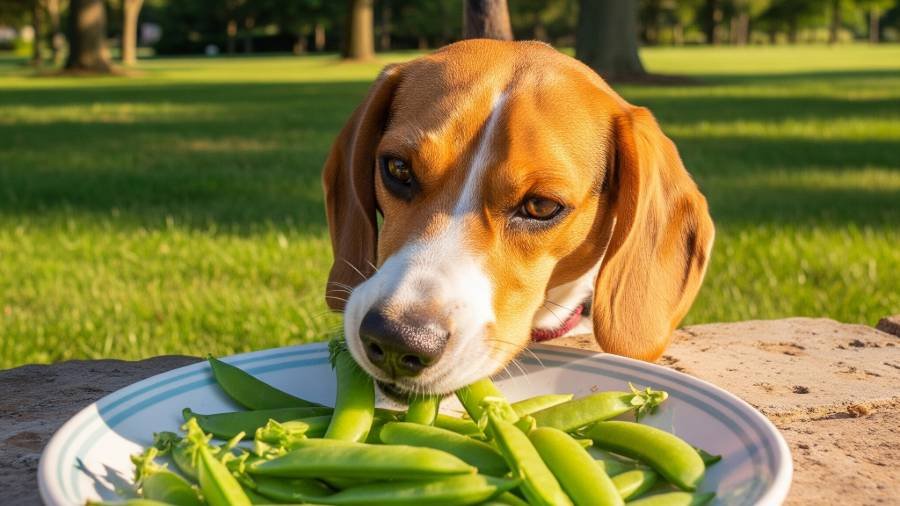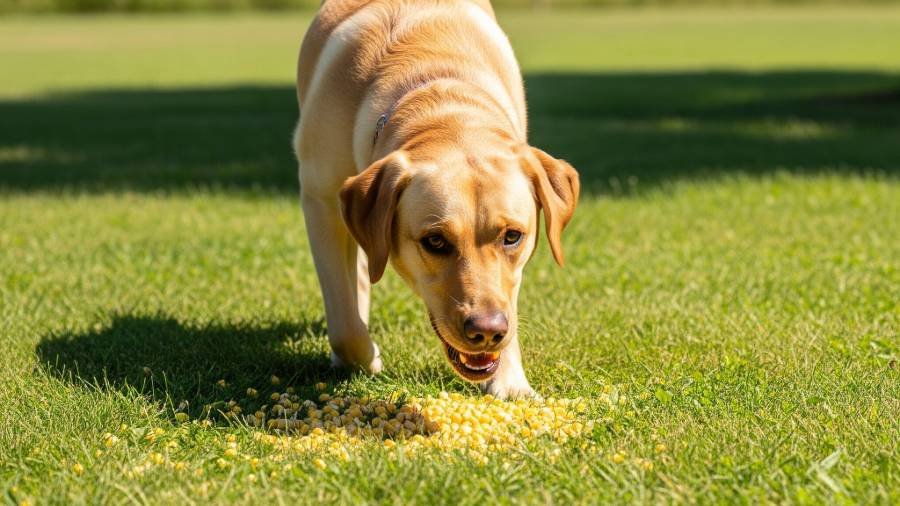Yes, dogs can eat strawberries in moderation as a healthy and flavorful treat, providing a variety of nutritional benefits when prepared correctly.

Potential Benefits of Strawberries for Dogs
When dogs can eat strawberries in small amounts, they deliver several advantages that enrich a dog’s diet and support overall health:
- Rich in Antioxidants: Strawberries are loaded with antioxidants, especially vitamin C, which bolsters the immune system by neutralizing free radicals and reducing inflammation, promoting long-term vitality.
- Excellent Source of Vitamins: Packed with vitamin C and manganese, strawberries support collagen production for healthy skin, aid in bone development, and contribute to metabolic health with essential nutrients.
- Low-Calorie Snack: With only about 4-5 calories per medium berry, strawberries serve as a guilt-free treat, ideal for weight management in dogs prone to obesity or those on a calorie-controlled diet.
- High Fiber Content: The natural fiber helps maintain a healthy digestive system, preventing constipation and supporting regular bowel movements, which is particularly beneficial for dogs with mild digestive issues.
- Hydration Support: Containing approximately 91% water, strawberries provide a hydration boost, making them a refreshing choice during hot weather or for dogs that need encouragement to drink more.
- Heart Health Benefits: The antioxidants and fiber may help lower bad cholesterol levels, offering a subtle contribution to cardiovascular health over time.
- Natural Energy Lift: The natural sugars provide a mild energy boost, suitable for active dogs needing a quick pick-me-up without overloading on calories.
These benefits position strawberries as a nutritious treat when you feed your dog strawberries as part of a balanced diet, complementing their regular meals. For more on safe fruit options, explore what fruits can dogs eat, which includes a variety of dog-friendly choices.
Risks and Dangers of Strawberries for Dogs
While strawberries are generally safe, certain risks emerge if not handled or fed with care, necessitating mindful preparation:
- Choking Hazard: Whole strawberries can pose a risk, particularly for small dogs or puppies, if swallowed without chewing, potentially leading to airway obstruction or discomfort that requires immediate attention.
- High Sugar Content: The natural sugars, while healthy in moderation, can cause weight gain or digestive upset if overfed, especially in dogs with diabetes or a sedentary lifestyle.
- Allergic Reactions: Although uncommon, some dogs may exhibit allergic responses, such as itching, swelling, or gastrointestinal distress, which should be monitored closely after introduction.
- Pesticide Exposure: Non-organic strawberries may carry pesticide residues, which can accumulate in a dog’s system over time, underscoring the importance of thorough cleaning.
- Added Sugars: Processed strawberry products like jams, jellies, or sweetened desserts can introduce excessive sugar, potentially leading to dental issues, obesity, or metabolic imbalances.
- Overconsumption: A large amount of strawberries may result in diarrhea, bloating, or a nutritional imbalance, displacing essential nutrients from a dog’s regular dog food.
- Oxalate Concerns: The oxalates present in strawberries, though in small amounts, could contribute to bladder stone formation in predisposed dogs if consumed excessively over an extended period.
- Digestive Sensitivity: Some dogs with sensitive stomachs may experience mild upset, even from plain strawberries, requiring a gradual introduction to assess tolerance.
How to Safely Feed Strawberries to Dogs
To ensure strawberries are a safe and enjoyable treat, adhere to these detailed guidelines when feeding strawberries to your dog:
- Wash Thoroughly: Rinse strawberries under running water to eliminate dirt, pesticides, or chemical residues, even if organic, to safeguard your dog’s health from potential contaminants.
- Remove Hulls: Take off the green tops or hulls to minimize choking hazard and enhance digestibility, making the fruit safer and more comfortable to eat.
- Cut into Small Pieces: Chop strawberries into bite-sized portions, especially for small dogs or puppies, to reduce the risk of choking and ensure easy consumption without strain.
- Avoid Additives: Serve plain strawberries without added sugars, syrups, whipped cream, or other toppings, which can add unnecessary calories or introduce toxic ingredients.
- Feed in Moderation: Offer a small portion – such as 1-2 small strawberries for small dogs (under 20 pounds), up to 3-4 for medium to large breeds (over 20 pounds) – once or twice a week, keeping treats under 10% of a dog’s daily caloric intake to maintain a balanced diet.
- Monitor Reactions: Introduce strawberries gradually, starting with a single berry, and observe for signs of digestive upset, allergies, or behavioral changes over 24-48 hours. Consult a vet if any issues arise.
- Consult a Vet: Seek veterinary advice before adding strawberries, particularly for dogs with diabetes, obesity, or a history of food sensitivities, to ensure the treat aligns with their health needs.
- Consider Freezing: Freeze strawberries for a refreshing summer treat, cutting them into safe sizes beforehand to avoid choking and providing a cooling effect on hot days.
- Check Freshness: Use fresh or frozen strawberries within their shelf life,refrigerated fresh berries should be consumed within a week to avoid spoilage and maintain nutritional value.
Signs of Strawberry-Related Issues
If a dog eats strawberries excessively or reacts poorly, be alert for these warning signs that may indicate a problem:
- Vomiting, Diarrhea, or Reduced Appetite: Possible digestive upset from overeating or an allergic reaction, suggesting a need to adjust portion sizes or discontinue use.
- Difficulty Swallowing or Choking: From whole berries or hulls, requiring immediate action to clear the airway and prevent serious complications.
- Excessive Scratching or Swelling: Rare allergic reactions that may present as skin irritation or facial swelling, necessitating a veterinary evaluation.
- Lethargy or Unusual Behavior: Could signal a nutritional imbalance from excessive sugar intake or an underlying sensitivity that warrants further investigation.
- Abdominal Pain or Bloating: Overconsumption effects that may cause discomfort, indicating a need to pause strawberry treats and reassess feeding habits.
If these signs appear, stop feeding strawberries and contact a veterinarian immediately. Though severe reactions are uncommon, they may require prompt veterinary care.
Expert Opinions
Veterinary experts, including the American Kennel Club (AKC) and the Pet Poison Helpline, affirm that dogs can eat strawberries safely in moderation, highlighting their antioxidant and vitamin content as significant benefits.
They advise removing hulls, cutting into small pieces, and limiting portions to prevent sugar-related issues, while recommending veterinary consultation for dogs with specific health conditions or dietary restrictions.
For more on safe fruit options, check can dogs eat blueberries, which offers a similar nutritional profile.
Additional Considerations
- Health Conditions: Dogs with diabetes, obesity, or gastrointestinal sensitivities should limit strawberries due to their natural sugar content. Consult a vet first to determine suitability.
- Puppies: Young dogs require smaller, softer pieces and closer monitoring to prevent choking or digestive strain, as their systems are still maturing.
- Dog Preferences: Many dogs relish the sweet, juicy taste of strawberries, but some may not. If uninterested, try can dogs eat apples for a comparable fruit-based treat.
- Organic vs. Non-Organic: Organic strawberries may reduce pesticide exposure, but all should be washed thoroughly regardless of origin to ensure safety.
- Seasonal Treat: Fresh strawberries shine as a delightful summer treat, while frozen ones provide a year-round option, adding variety to your dog’s diet.
- Storage: Store fresh strawberries in the refrigerator and use within a week; freeze extras to preserve freshness and offer a cooling snack during warmer months.
- Complementary Role: Strawberries should enhance, not replace, a balanced diet tailored to your dog’s nutritional requirements, serving as a supplement rather than a primary food source.
- Allergy Testing: For dogs new to strawberries, start with a tiny piece and wait 24-48 hours to confirm tolerance, especially if they have a history of food allergies.
Safe Treat Alternatives
Instead of strawberries, consider these safe-for-dogs treats, tailored to enhance a dog’s diet:
- Cooked Turkey: Plain, unseasoned turkey bits provide lean protein and essential amino acids, supporting muscle health.
- Cooked Pumpkin: A teaspoon of plain pumpkin supports digestion with its fiber and nutrient content.
- Carrots: Small, raw carrot sticks promote dental health with their crunch and provide a low-calorie option.
- Plain Greek Yogurt: A small spoonful of unsweetened Greek yogurt boosts probiotics for gut health and offers a creamy texture.
Introduce new treats gradually, monitor for reactions such as digestive changes, skin irritations, or behavioral shifts, and consult a vet to ensure a balanced diet that meets your dog’s specific needs and preferences.
Dogs can eat strawberries as a safe, nutrient-rich treat when fed in moderation, delivering health benefits such as antioxidants, vitamins, and fiber to support immune system health, digestion, and hydration.
However, risks like choking hazard from whole berries, high sugar content leading to weight gain, or rare allergic reactions necessitate proper preparation – removing hulls, cutting into small pieces, and avoiding added sugars.
Puppies or dogs with health issues like diabetes should limit strawberries unless approved by a vet, and a balanced diet should remain the cornerstone of their nutrition.
Always consult a veterinarian before feeding your dog strawberries, especially if introducing them for the first time or if your dog has pre-existing conditions, and consider safe alternatives to maintain dietary variety.
For more on canine nutrition, explore can dogs eat bananas for another sweet treat, can dogs eat watermelon for hydration, or what fruits can dogs eat for a comprehensive overview.
For additional questions about what dogs can eat, dietary plans, or pet care advice, feel free to ask!





